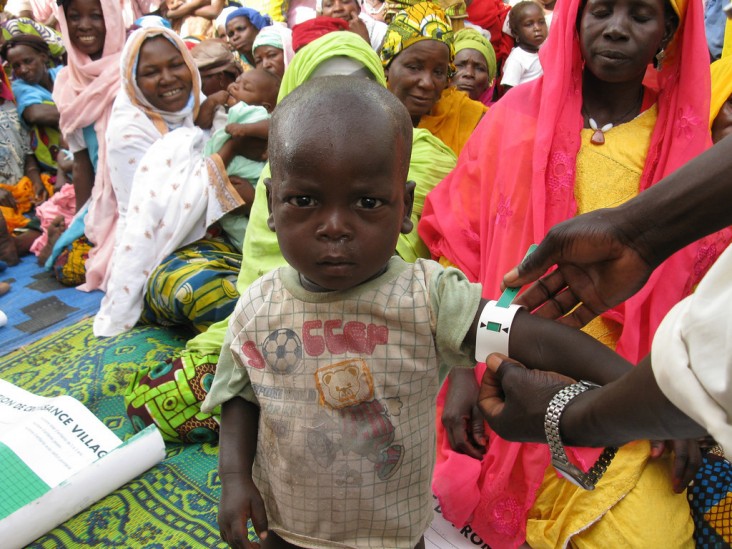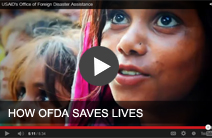- What We Do
- Agriculture and Food Security
- Democracy, Human Rights and Governance
- Economic Growth and Trade
- Education
- Environment and Global Climate Change
- Gender Equality and Women's Empowerment
- Global Health
- Humanitarian Assistance
- Transformation at USAID
- Water and Sanitation
- Working in Crises and Conflict
- U.S. Global Development Lab
Speeches Shim

Staff with USAID/OFDA partner Save the Children measure a boy's middle upper arm circumference (MUAC) to test for acute malnutrition at a nutrition awareness event in rural Niger.
Johs Pierce, USAID/OFDA
USAID-OFDA Nutrition Sector Update - FY 2019 ![]() (pdf - 358k)
(pdf - 358k)
USAID’s Office of U.S. Foreign Disaster Assistance (USAID/OFDA) is at the forefront of the humanitarian community’s efforts to prevent and treat acute malnutrition. USAID/OFDA-supported programs are community-based, linked to local health systems, and use evidence-based approaches that decrease morbidity and mortality resulting from malnutrition. The majority of USAID/OFDA’s nutrition programs were based in the Horn of Africa and western Africa’s Sahel region—two areas where drought severely impacted communities’ abilities to produce and purchase sufficient quantities of diverse foods, thereby increasing the risk of spikes in acute malnutrition levels among vulnerable populations.


Comment
Make a general inquiry or suggest an improvement.